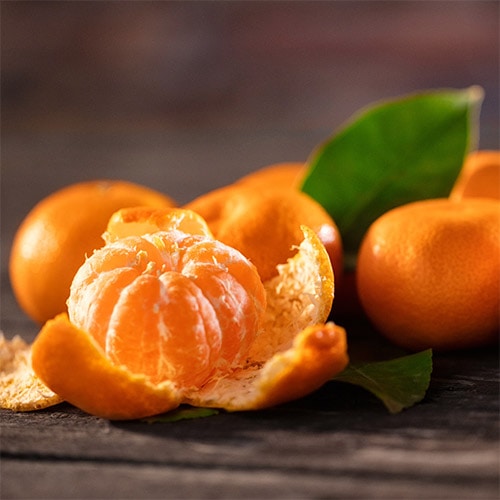 There are approximately 200 varieties of mandarin oranges.
There are approximately 200 varieties of mandarin oranges.
Background
- Mandarins are a part of the Rutaceae botanical family. This botanical family includes many citrus fruits including grapefruit, orange, lemon, and lime.
- Mandarins are one of the original citrus fruits. They are smaller than an orange and have a sweeter taste.
- Tangerines and clementines are hybrid varieties of mandarins.
- Tangerines are a cross between the mandarin and pomelo.
- The clementine is a cross between the mandarin and sweet orange.
Nutrition
- Mandarins are an excellent source of vitamin C.
- Vitamin C is an antioxidant which supports collagen and connective tissue formation, immune function, and wound healing.
How to Purchase, Prepare, and Store
- Purchase mandarins in-season from November to February, depending on where they are grown. Canned mandarins are available year-round at grocers. Choose those that are canned in their own juice versus those that are canned in syrup.
- When choosing mandarins, they should be bright in color and heavy for their size. Avoid those with soft spots or signs of mold.
- Remove skin prior to eating. Mandarins can be eaten raw as a delicious snack or added to your favorite dessert or main dish recipes.
- Mandarins can be added to fruit or vegetable salads and used in smoothies or parfaits. They can also be juiced.
- Store in a cool, dark place. Whole mandarins stored at room temperature are good for one week. If stored in the refrigerator, they can last up to six weeks.
Nutrition Facts
1 medium mandarin
- Calories: 46.6
- Protein: 0.7 g
- Fat: 0.2 g
- Carbohydrate: 11.7 g
- Fiber: 1.5 g
- Calcium: 32.6 mg
- Iron: 0.1 mg
- Magnesium: 10.6 mg
- Phosphorus: 17.6 mg
- Folate: 14.1 μg
- Vitamin A: 29.9 μg
Via fdc.nal.usda.gov
Recipes
Request an Appointment